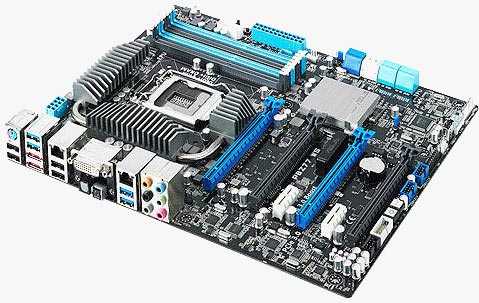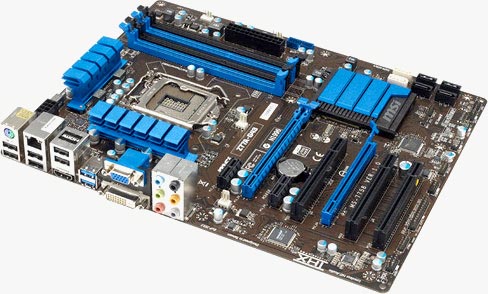|
Motherboards:
Next up is choosing a motherboard. The motherboard connects everything to each other and all data travels through it. So is very important to make sure that the motherboard you select is actually able to connect with all the other components that you wish to use!

When choosing a motherboard all the letters and numbers may look confusing but the main thing is making sure the board has the right socket and right chipset. Different processor architectures use different sockets.
On a basic level an AMD processor will not work on a motherboard designed for Intel CPUs. Even within AMD and Intel there are different sockets. So a motherboard designed for AMD AM3+ CPUs will work with AM3 CPUs and maybe even AM2+ CPUs provided it is backwards compatible. However, it will not work with AMD FM1 or FM2 socket CPUs which are based on completely different architectures. Similarly Intel Socket 1155 CPUs will not fit on motherboards which support Intel Socket 775, Socket 1155, Socket 1366 or Socket 2011 CPUs. So the first thing to do is to check whether the motherboard you are selecting is compatible with the CPU you would like to use.
Once you know the socket of the CPU you wish to use in the PC, you then need to look at the various motherboard chipsets available for that particular socket. Different chipsets will have different features and will make a big difference in the performance of your Home PC. For example, for Intel Socket 1155 you have a choice of motherboards based on the Intel H61, Intel H67, Intel B75, Intel H77, Intel P67, Intel Z68, Intel Z77, Intel Q67, Intel Q77 chipsets. So there is quite a lot of choice!! It is important to do research into what motherboard would be appropriate and one way you can do this is by calling one of the Arbico Computers sales team on 08456 252627.
Other important considerations when selecting a motherboard are to ensure it will fit the case you have selected. Fitting a small motherboard in a large case is usually fine but obviously a large motherboard will not fit in small case. So a full E-ATX (extended ATX) motherboard will not fit in a standard ATX case and a standard ATX board will not fit in a micro ATX case.
Not all motherboards support SATA III and/or USB 3. So if you intend to have SATA III or USB 3 devices it is important that the motherboard you choose supports these features. There is no point going for a fast SATA III Solid State Drive only for it to work at slower speeds because the board only supports SATA II. Similarly while USB 3 devices are usually backwards compatible with USB 2 ports, they will work much better and faster with USB 3 ports.

The motherboard should support the amount and speed of RAM you would like in the PC and have the appropriate number of memory slots to fit the required amount of RAM. If you have splurged on fast gaming memory but the board only supports a slower memory speed, the RAM sticks might not work properly or work at slower speeds.
The motherboard chosen should also have the adequate number of PCI and PCI Express (PCI-E) slots for the graphics cards and additional expansion cards you would like to install. When looking at PCI and PCI-E slots remember that nowadays high-end graphics cards have big heatsinks which mean these cards take over two or even three slots, so some of the PCI or PCI-E slots might be covered by the graphics card heatsinks.
Finally make sure the motherboard can support any essential features you might need (such as firewire or ESATA or a certain number of USB or Ethernet ports) either inherently or via cards that can be installed in free PCI or PCI-E slots.
|